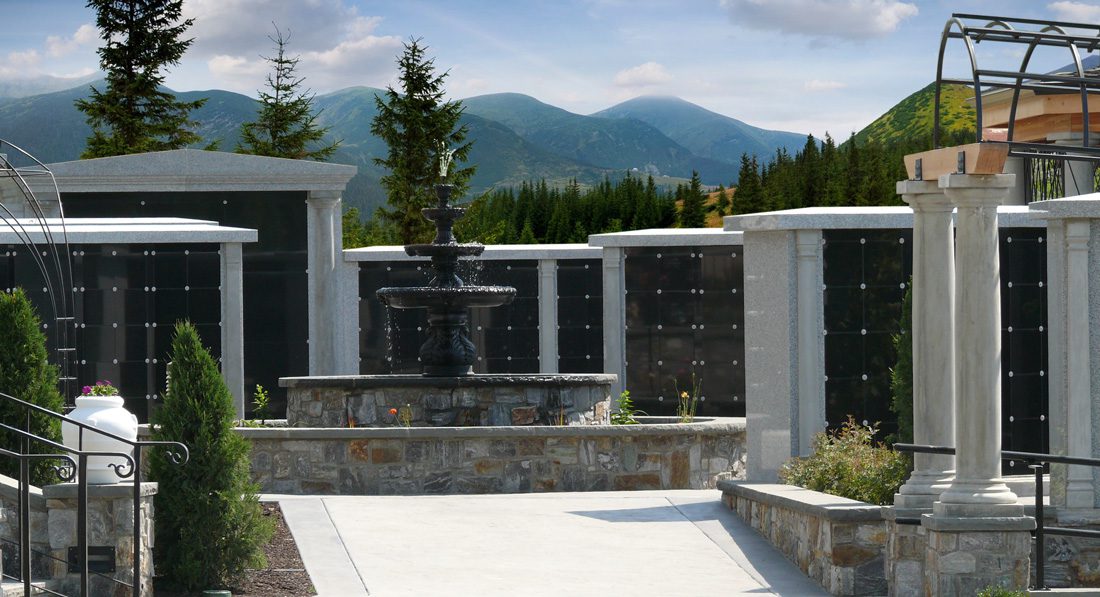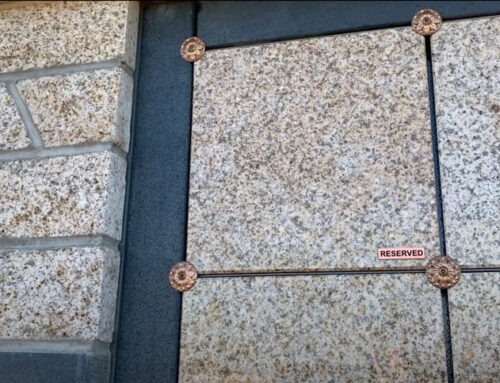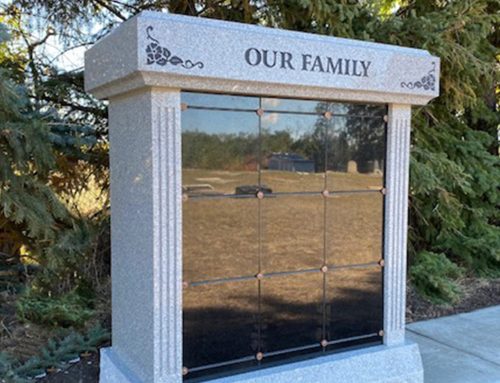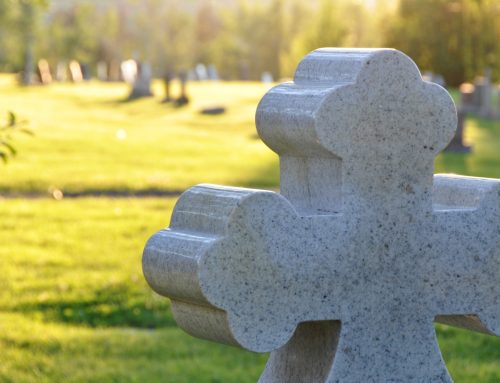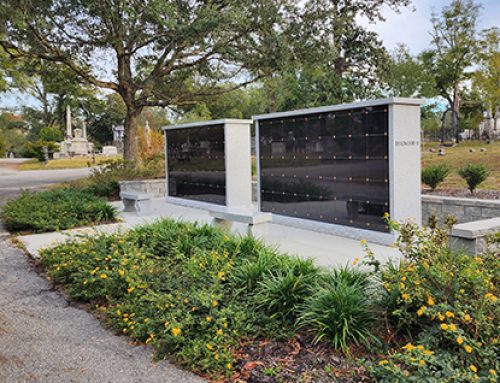The practice of cremation is becoming more common in North America. Although some religions forbid cremation, others have accepted the concept and today refer to cremation in their canon. Various religious denominations are adapting to these changes and integrating the practice into their funeral services. Some eastern religions have been cremating their dead for centuries and continue the practice today. The following brief summaries and references focus on a select religious perspectives towards cremation.
• Anglican
According to the Church of England, Anglicans accept the practice of cremation. “Some families find that they prefer to go the crematorium first and then come into church afterwards: others ask the church minister to go to the crematorium on their behalf.”1The cremains are then buried or placed in columbaria or cremation garden.
• Baptist
The Baptists believe that the final wishes of an individual or their family (concerning interment) should always come first. They do not have any negative feelings towards cremation. The practice of cremation does not interfere with their funeral rituals, although some Baptists prefer traditional funeral services prior to cremation. “Many Christians today have a strong belief in bodily resurrection without believing the physical body must be preserved to make that happen.”2
• Buddhist
According to Buddhist tradition, cremation is an acceptable practice for dealing with the body of the deceased. “Most Buddhists are cremated, following the example of the Buddha, but this is not invariably the case. Some Buddhist traditions say that at least 4 days should pass before the body is cremated and that embalming should be avoided if at all possible. The general advice is that the body should be left as undisturbed as possible in the interval between death and cremation or burial.”3
When the body is being cremated, the monks are present in the crematorium as they lead the chanting of the prayer for the dead. The family then collects the cremated remains. Some family members take the cremains home, while others inter them in ground burial or cemetery columbaria.
• Catholic
Historically, the Catholic Church did not support cremation. “In ground” casket burial or above ground crypts were the traditional form of interment. However, today Catholics consider cremation to be an acceptable practice. “In April 1997, the Congregation for Divine Worship and the Discipline of the Sacraments granted an indult for the United States to allow the diocesan bishop to permit the presence of the cremated remains of a body at a Funeral Mass.”4 Some Catholic churches prefer that traditional funeral services be adhered to before the body is cremated. The ashes are then interred in a columbarium or buried in the ground.
In October, 2016 the Vatican’s Doctrinal Office released new guidelines regarding cremation, the scattering of ashes, and where ashes may be kept. CNN reported 11 guidelines to include :
Not scattering ashes at sea
Ashes should not be kept in an urn at home
Ashes are not to be divided up between family members
Ashes are not to be kept in trinkets, jewellery, or other objects
– Episcopalian
For the Episcopalians, cremation is an acceptable alternative to traditional in ground burial. “The practice became more widespread, and was no longer understood to deny the resurrection of the body. The 1979 BCP is the first American Prayer Book to recognize cremation. The BCP states (p. 490) that the committal service may precede cremation.”5
• Hindu
Cremation is the traditional Hindu funeral practice. However, Saints, children, and babies are generally buried instead of cremated. Funeral pyres are lit along designated areas of the Ganges River. The waters of the Ganges are considered sacred and it is sprinkled onto the pyre as it burns. Following tradition, the cremains are then scattered into the Ganges River.
In North America some crematories accommodate Hindu custom so that families can remain with the body until it has been cremated. It is not uncommon for some families return to The Ganges to scatter the cremains.
– Lutherans
Lutherans accept cremation, as an option to bury their dead for it does not interfere with any of the traditional practices of the Lutheran Funeral. Whether it is for financial, personal or logistical reasons, some Lutherans prefer cremation. “The Christian Church firmly believes that the body will be resurrected on the last day and that the departed soul will be returned to it.”8 The scattering of ashes is not considered an acceptable practice, families are encouraged to inter the cremains in the burial plots or placed in a columbarium.
– Presbyterians
A Christian burial is important to the faithful who wish for resurrection and everlasting life. The service is to take place in The Church or location of common worship. Traditionally, in ground burial of the deceased has been the norm. But as times have changed cremation is becoming more commonly accepted. According to The Book of Worship “It is permissible for Christians to dispose of bodies by burial, cremation, or donation for scientific purposes.”9
– The United Church
The United Church recognizes the practice of cremation. It does not, in any way, interfere with the ability to commend the departed to God. The funeral service ends when the cremains are buried in the ground, scattered in a meaningful place, or interred in a columbarium.
When the first crematorium was built in the United States in 1876, cremation was not generally considered to be an acceptable religious funerary practice. But over the years attitudes and beliefs regarding cremation have changed. As the cremation rates in North America continues to rise, more religious denominations are accepting cremation. In response, religious cemeteries are adapting to these changes by designing cremation gardens that focus on columbaria. From simple structures to more complex custom designs, the columbarium adds aesthetic appeal to the religious cemetery landscape while marking a sacred place of remembrance.
References
1. https://churchofenglandfunerals.org/?s=cremation&search-type=service
2. http://assets.baptiststandard.com/archived/2001/1_22/pages/ashesquestions.html
3. http://www.thebuddhistsociety.org/page/buddhist-funerals
4. http://www.usccb.org/prayer-and-worship/bereavement-and-funerals/cremation-and-funerals.cfm From the January 2012 Newsletter of the Committee on Divine Worship © 2012, United States Conference of Catholic Bishops.
5. http://www.episcopalchurch.org/library/glossary/cremation
6. http://www.bbc.co.uk/schools/gcsebitesize/rs/death/hindudeathritesrev2.shtml
7. http://www.hinduismtoday.com/modules/smartsection/item.php?itemid=1667
8. http://www.lutheranchurch.ca/synod2011/workbook_g.pdf :
http://lutheranreformission.blogspot.com/2009/12/cremation.html
9. http://www.epc.org/file/main-menu/resources/download-epc-doc/book-of-order-2013-14.pdf
10. Guidelines Pastoral Care for McClure United Church
http://www.mcclureucedmonton.ca/wp-content/uploads/2013/10/death_dying_christian_web.pdf
11.www.cnn.com/2016/10/25/europe/cremation-vatican-scattering/

